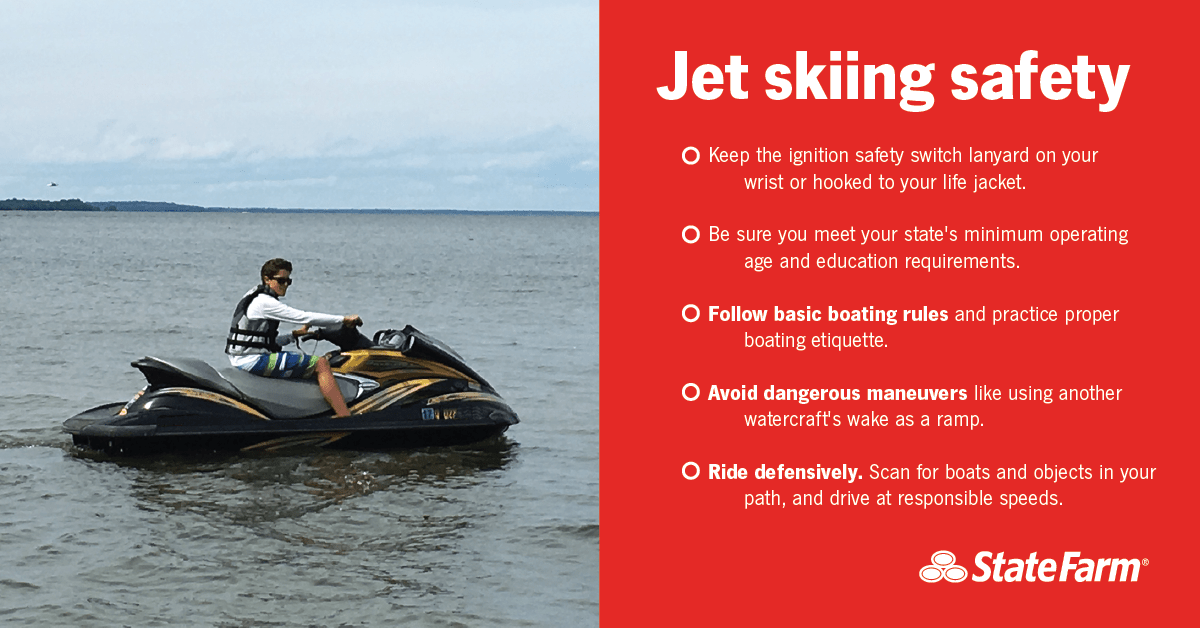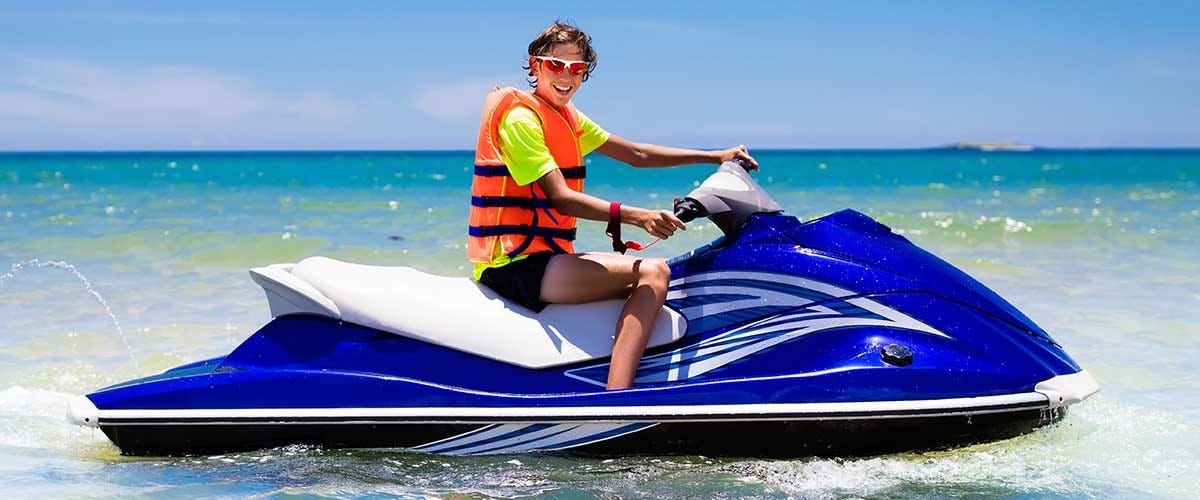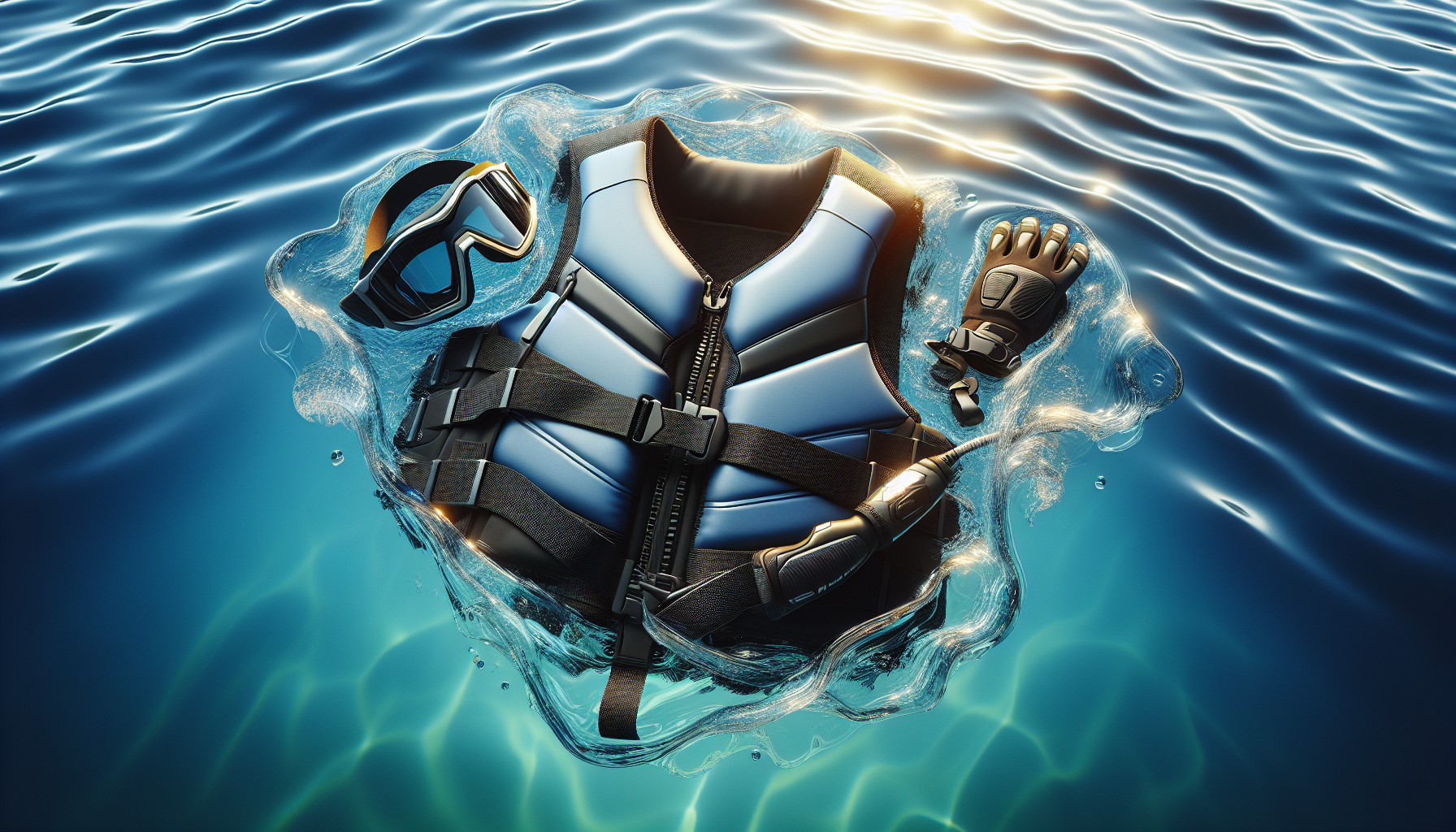Jet Ski Safety Tips

Jet skiing can be an exhilarating and fun experience, but it’s essential to prioritize safety while out on the water. Whether you’re a seasoned jet ski enthusiast or a beginner looking to try something new, it’s crucial to be aware of jet ski safety tips to ensure a memorable and incident-free adventure. From understanding the rules and regulations of the waterways to wearing appropriate safety gear, this article will provide you with valuable insights and recommendations to enhance your jet ski experience. So, before you hit the waves, keep these safety tips in mind to make the most of your time on the water. And if you’re in Orange Beach, AL, make sure to rent your jet skis from the experienced watersport experts at A2Z Powersport for a safe and enjoyable ride.
Jet Ski Safety and Training: Your Comprehensive Guide to a Safe and Enjoyable Ride
Jet skiing is an exhilarating water sport that allows you to glide across the waves, experiencing the thrill of speed and freedom. As with any activity, it is crucial to prioritize safety while having fun. In this comprehensive guide, we will walk you through the essential steps to ensure a safe and enjoyable jet skiing experience. Whether you are a seasoned rider or a beginner, these tips will help you stay safe on the water.
This image is property of jetskipartsguy.com.
Pre-Ride Inspection
Before embarking on your jet ski adventure, it is essential to perform a thorough pre-ride inspection to ensure that your watercraft is in optimal condition. By following these simple steps, you can significantly reduce the risk of malfunction or accidents during your ride.
Check the fuel level and oil
Check the fuel level of your jet ski and ensure that there is enough fuel to complete your ride. Additionally, inspect the oil level and top it up if necessary. Adequate fuel and properly maintained oil levels are essential for the smooth operation of your watercraft.
Inspect the hull and engine for any damages
Carefully examine the hull and engine of your jet ski for any signs of damage, such as scratches, dents, or leaks. If you notice any issues, it is crucial to address them before hitting the water. Damaged hulls or engines can compromise the safety and performance of your watercraft.
Ensure the steering and throttle controls are functioning properly
Test the steering and throttle controls to ensure they are responsive and functioning correctly. Smooth and efficient control of your jet ski is vital for maneuvering and maintaining control while riding.
Check the safety lanyard and kill switch
Always ensure that the safety lanyard, also known as the kill switch, is properly attached to your life jacket. In the event of an unintentional fall from the jet ski, the kill switch will automatically shut off the engine, preventing your watercraft from spiraling out of control.
Inspect the life jacket and ensure it fits properly
Wearing a Coast Guard-approved life jacket is non-negotiable when jet skiing. Inspect your life jacket before each ride, ensuring that there are no rips or tears. Additionally, make sure the life jacket fits snugly and does not restrict your movement. A properly fitted life jacket can save your life in case of an emergency.
Personal Safety Gear
The importance of personal safety gear cannot be overstated. By wearing the appropriate gear, you can protect yourself from potential hazards and enjoy your jet skiing experience to the fullest.
Always wear a Coast Guard-approved life jacket
As mentioned earlier, wearing a Coast Guard-approved life jacket is essential for your safety. Life jackets are designed to keep you afloat and provide buoyancy, even in choppy waters. Ensure that your life jacket is worn at all times during your jet skiing adventure.
Wear appropriate clothing for protection from the sun and water
Being exposed to the sun and water for extended periods can take a toll on your body. Protect yourself by wearing lightweight, quick-drying clothing that covers your skin. This will shield you from harmful UV rays and reduce the risk of sunburn. Additionally, consider wearing a hat and sunglasses for added sun protection.
Wear a wetsuit or neoprene gear in colder conditions
In colder weather or water conditions, wearing a wetsuit or neoprene gear is crucial. These specialized garments provide insulation and protect your body from the cold. Even in warmer climates, it is advisable to carry a wetsuit in case the water temperature drops unexpectedly.
Use eye protection, such as sunglasses or goggles
The glare of the sun on the water can be blinding, making it challenging to navigate safely. Protect your eyes by wearing sunglasses with polarized lenses or goggles. Not only will these accessories improve visibility, but they will also shield your eyes from wind, water, and debris.
Consider wearing footwear to protect your feet
Jet skis generate considerable power, and there is a risk of debris or objects in the water. Protect your feet from potential injury by wearing sturdy footwear, such as water shoes or strapped sandals. These types of footwear will provide traction, prevent slips, and shield your feet from sharp objects.
Know the Rules and Regulations
Familiarizing yourself with the rules and regulations governing jet skiing is essential to ensure the safety of both yourself and others on the water. By understanding and adhering to these guidelines, you can enjoy your ride while minimizing the risk of accidents or penalties.
Obtain the necessary boating and jet ski licenses
Before operating a jet ski, it is crucial to obtain the necessary boating and jet ski licenses as required by your local authorities. These licenses typically involve completing a brief education course and passing a test to ensure your understanding of boating safety practices.
Familiarize yourself with local boating laws and regulations
Different regions may have their own specific boating laws and regulations. Take the time to familiarize yourself with these rules and ensure that you comply with them. This includes understanding speed limits, no-wake zones, and any specific restrictions or requirements for operating a jet ski.
Understand speed limits and no-wake zones
Speed limits are in place to ensure the safety of all boaters and the surrounding environment. Pay attention to posted speed limit signs and adhere to them at all times. Additionally, be aware of designated no-wake zones, where slower speeds are mandatory to prevent damage to shorelines and protect wildlife.
Be aware of restricted areas and navigational markers
Certain areas may be off-limits due to safety concerns or environmental preservation efforts. Familiarize yourself with restricted areas and avoid entering them. Navigational markers, such as buoys and channel markers, are designed to guide boaters safely. Learn to interpret these markers to navigate effectively and avoid hazards.
Follow right-of-way rules and maintain a safe distance from other vessels
Understanding right-of-way rules is essential for maintaining a safe distance from other vessels and avoiding collisions. Always yield to larger crafts and give way to boats or personal watercraft on your starboard (right) side. Maintain a safe distance from other watercraft to prevent accidents and allow for ample reaction time.
Weather and Water Conditions
Keeping a close eye on weather and water conditions is vital for your safety. Sudden changes in weather or unfavorable water conditions can pose significant risks to jet skiers. Stay informed and make informed decisions to ensure a safe and enjoyable ride.
Check the weather forecast before heading out
Before you embark on a jet ski adventure, check the weather forecast for the area. Look for any indications of storms, strong winds, or inclement weather. If adverse weather conditions are predicted, it is best to postpone your ride to a safer time.
Avoid jet skiing in excessive wind or stormy conditions
Jet skiing in excessive wind or stormy conditions is extremely dangerous and should be avoided at all costs. High winds can create rough waves and make maneuvering difficult. Similarly, severe storms can generate unpredictable water conditions, jeopardizing your safety.
Be cautious of strong currents, tides, and waves
In addition to wind and storms, it is crucial to be mindful of strong currents, tides, and waves. These natural forces can affect your ability to control your jet ski and increase the risk of accidents or capsizing. Research the current conditions before hitting the water and exercise caution if they are unfavorable.
Avoid areas with poor visibility, such as fog
Poor visibility, such as fog, can make it challenging to spot obstacles or other watercraft. Avoid riding in areas with limited visibility, as it increases the chances of collisions. If you encounter fog while on the water, reduce your speed and use navigational markers and GPS to guide you safely.
Stay alert to changing weather and water conditions
Weather and water conditions can change rapidly, even during a short ride. Stay alert and continuously monitor the environment around you. If you notice any signs of deteriorating conditions, such as darkening skies or increasing waves, it may be time to head back to shore and seek shelter.
This image is property of content.presspage.com.
Safe Riding Techniques
Practicing safe and responsible riding techniques is crucial for your own safety and the safety of others around you. By following these best practices, you can have an enjoyable jet skiing experience while minimizing the risk of accidents or injuries.
Keep both hands on the handlebars and maintain a secure grip
Maintaining full control of your jet ski is essential, and this starts with keeping both hands on the handlebars at all times. This allows for precise steering and increases stability. Ensure that your grip on the handlebars is firm yet comfortable, enabling you to maneuver the watercraft effectively.
Use the throttle smoothly and gradually increase speed
When operating the throttle, avoid abrupt and jerky movements. Gradually increase your speed to maintain stability and prevent the jet ski from unexpectedly accelerating. Smooth throttle control allows for better handling and reduces the risk of losing control or being thrown off balance.
Avoid aggressive maneuvers and excessive speed
While it may be tempting to show off your skills or race across the water, it is crucial to avoid aggressive maneuvers and excessive speed. Maintain a safe and responsible speed, especially in crowded areas or near other vessels. Quick turns or sudden stops can pose a danger to yourself and others.
Be cautious when turning and maintain a safe distance from other vehicles
When making turns, exercise caution and maintain control of your jet ski. Slow down before initiating a turn and make sure there are no other watercraft in your path. Respect the personal space of other vessels and maintain a safe distance, especially when overtaking or crossing paths.
Stay vigilant and be aware of your surroundings
Constantly scan your surroundings while riding your jet ski. Look out for other vessels, swimmers, or any potential obstacles. Staying aware and alert helps you anticipate and react to any hazards, enabling you to navigate the waters safely. Do not rely solely on mirrors or GPS but actively use your senses to assess your environment.
Jet Ski Maintenance
Proper maintenance is essential for keeping your jet ski in excellent working condition. By following the manufacturer’s recommended maintenance schedule and regularly inspecting your watercraft, you can prevent breakdowns, ensure optimal performance, and extend its lifespan.
Follow the manufacturer’s recommended maintenance schedule
Every jet ski has specific maintenance requirements outlined by the manufacturer. Familiarize yourself with your watercraft’s maintenance schedule, including routine checks, servicing intervals, and recommended replacement parts. Adhering to this schedule will significantly minimize the risk of unexpected malfunctions or failures.
Regularly inspect and clean the jet ski’s intake grate
The intake grate is an essential component of the jet ski that prevents debris from entering the engine. Regularly inspect this area for any clogs or blockages and remove any accumulated debris. A clean intake grate ensures proper water flow and prevents engine damage.
Check and maintain proper fuel and oil levels
Maintaining proper fuel and oil levels is vital for the optimal performance of your jet ski. Before each ride, check the fuel level and top up if necessary. Additionally, monitor the oil levels and replace or top up as recommended by the manufacturer. Keeping these levels within the specified range will contribute to the longevity of your jet ski.
Flush the engine after each use in saltwater
If you ride in saltwater, it is crucial to flush the engine after each use. Saltwater can be particularly corrosive, and flushing removes any salt or impurities from the engine, reducing the risk of damage. Following this step will prolong the life of your jet ski and maintain its performance.
Inspect and replace worn-out or damaged parts
Regularly inspect your jet ski for any signs of worn-out or damaged parts. Look for cracks, leaks, loose connections, or any other anomalies. Replace any components that are showing signs of wear or damage to ensure the safe and smooth operation of your watercraft.
This image is property of miro.medium.com.
Emergency Preparedness
While no one expects to encounter an emergency while jet skiing, it is essential to be prepared for unexpected situations. By following these guidelines and having a plan in place, you can better handle emergencies and potentially save lives.
Carry a whistle or signaling device to attract attention in case of emergencies
In case of an emergency, having a whistle or other signaling device can be a lifesaver. These devices can attract the attention of nearby vessels or rescuers. Keep a whistle securely attached to your life jacket or watercraft for easy access during emergencies.
Know how to properly use and operate the jet ski’s safety equipment
Familiarize yourself with the operation of your jet ski’s safety equipment, such as the fire extinguisher, anchor, or emergency flares. Knowing how to use these tools correctly can mitigate potential risks and help you respond effectively to emergencies.
Carry a fully charged cell phone or marine radio for communication
Always carry a fully charged cell phone or marine radio with you while jet skiing. These devices allow you to communicate with emergency services or seek assistance in case of an accident or emergency. Waterproof phone cases or marine radio holders can help protect your devices from water damage.
Be prepared for emergencies by knowing basic first aid and CPR
Accidents can happen anytime, anywhere. Being equipped with basic first aid and CPR knowledge can potentially save lives in emergency situations. Consider taking a first aid and CPR course to gain the necessary skills to provide immediate assistance if needed.
Have a plan in case of accidents or unexpected situations
Preparation is key when it comes to accidents or unexpected situations. Have a plan in place and communicate it with your fellow riders or any passengers you may have. This plan should include steps to take in case of an accident, how to contact emergency services, and the location of nearby medical facilities.
Avoid Alcohol and Drugs
Operating a jet ski under the influence of alcohol or drugs poses a significant risk to yourself and others on the water. It is crucial to stay sober and mentally alert while jet skiing to ensure your safety and the safety of those around you.
Never operate a jet ski under the influence of alcohol or drugs
Alcohol and drugs impair judgment, coordination, and reaction times, making it extremely dangerous to operate a jet ski while under their influence. It is paramount to avoid consuming alcoholic beverages or drugs before or during your ride. Plan ahead for a designated sober operator or choose alternative transportation.
Alcohol and drugs impair judgment, coordination, and reaction times
The effects of alcohol and drugs on your body can severely impact your ability to operate a jet ski safely. These substances impair judgment, impede coordination, and lengthen reaction times. Intoxication increases the likelihood of accidents and puts both yourself and others in danger.
Stay hydrated with water and avoid excessive consumption of alcohol
While it is essential to stay hydrated, opt for water and avoid excessive consumption of alcohol while jet skiing. Drinking water throughout your ride will help maintain your body’s hydration levels, keeping you alert and focused. Alcohol, on the other hand, dehydrates the body, further compromising your cognitive and physical abilities.
Designate a sober operator or choose alternative transportation
To ensure everyone’s safety, designate a sober operator if you plan on enjoying alcoholic beverages after your ride. Alternatively, choose alternative transportation, such as a taxi or rideshare service. Making responsible decisions regarding alcohol consumption and transportation is vital for the well-being of yourself and others.
This image is property of i.ytimg.com.
Jet Skiing with Passengers
Jet skiing with passengers can be a thrilling experience. However, it is crucial to prioritize safety and ensure the well-being of your passengers while on the water. Follow these guidelines to guarantee a safe and enjoyable ride for everyone.
Ensure all passengers wear properly fitted life jackets
Just like the operator, all passengers onboard the jet ski must wear properly fitted life jackets. Ensure that there is a Coast Guard-approved life jacket available for each passenger, and that they are snugly worn. The life jacket provides an additional layer of safety for your passengers in case of an accident or unexpected water entry.
Educate passengers on jet ski safety rules and behavior
Before embarking on your ride, educate your passengers about jet ski safety rules and behavior. Inform them about the proper way to hold on, how to maintain balance, and how to respond in case of an emergency. By setting clear expectations and guidelines, you can enhance the safety of everyone onboard.
Maintain communication with passengers and provide clear instructions
Establishing clear communication with your passengers is vital for their safety and enjoyment. Use hand signals or agreed-upon non-verbal communication cues to indicate turns, speed adjustments, or any potential hazards. Provide clear instructions and ensure that everyone understands and follows them.
Be cautious of weight distribution and the impact on the jet ski’s stability
The weight distribution onboard a jet ski can affect its stability and handling. Be mindful of how the weight of your passengers is distributed and ensure it is evenly balanced. Uneven weight distribution can impact the stability of the watercraft, making it more prone to tipping or becoming unstable.
Avoid sudden maneuvers or excessive speed with passengers
When riding with passengers, it is crucial to prioritize their safety and comfort. Avoid sudden maneuvers or aggressive riding techniques that could startle or endanger your passengers. Additionally, maintain a responsible speed that allows everyone onboard to feel secure and maintain their balance.
Training and Lessons
Whether you are a beginner or an experienced rider, seeking professional training and lessons can greatly enhance your jet skiing skills and safety. Consider enrolling in a jet ski safety course or training program to gain valuable knowledge and improve your riding abilities.
Consider enrolling in a jet ski safety course or training program
Jet ski safety courses or training programs are designed to educate riders of all levels about the essential skills and knowledge necessary for safe jet skiing. These courses cover topics such as safety procedures, emergency response, navigation, and correct riding techniques. Enrolling in such a program can give you the confidence and skills needed to navigate the water safely.
Get familiar with basic jet ski operation and maneuvers
If you are new to jet skiing, it is essential to get familiar with basic jet ski operation and maneuvers before hitting the water. Learn how to start and stop the engine, control the throttle, and make turns safely. Practice these maneuvers in a safe and controlled environment until you feel confident in your abilities.
Learn about safety procedures and emergency response
Knowing the correct safety procedures and emergency response protocols can be a lifesaver in critical situations. Familiarize yourself with topics such as self-rescue, how to help others in distress, and how to respond to common emergencies while on the water. This knowledge will equip you to handle unforeseen circumstances effectively.
Gain confidence and improve riding skills through professional instruction
Even if you have been riding jet skis for years, there is always room for improvement. Professional instruction can help you identify areas for growth, refine your skills, and boost your confidence on the water. Seek out qualified instructors who can provide personalized guidance and help you become a safer and more proficient rider.
Stay updated with the latest safety techniques and guidelines
The world of jet skiing is ever-evolving, with new safety techniques and guidelines continuously being developed. Stay informed and up to date with the latest industry standards by following reputable sources, attending workshops, or participating in online forums. This ongoing education will ensure that you are equipped with the most current knowledge to keep yourself and others safe.
In conclusion, jet skiing is a thrilling and enjoyable water sport, but safety should always be a top priority. By following the comprehensive guide outlined above, you can minimize the risk of accidents or injuries and make the most of your jet skiing experience. Remember to always perform a pre-ride inspection, wear appropriate safety gear, know the rules and regulations, be aware of weather and water conditions, practice safe riding techniques, maintain your jet ski, be prepared for emergencies, avoid alcohol and drugs, ride responsibly with passengers, seek proper training and lessons, and stay updated with the latest safety techniques and guidelines. With these precautions in place, you can embark on your jet skiing adventures with confidence, knowing that you are well-prepared for a safe and memorable ride. For a truly unforgettable jet skiing experience, we recommend renting your jet skis from the watersport experts at A2Z Powersport, located in Orange Beach, AL, at the Fort Morgan Marina. Contact A2Z Powersport at (954) 296 1862 or bookings@a2zpowersport.com for more information and to book your jet ski rental today. Happy and safe jet skiing!












